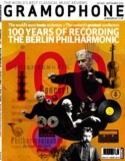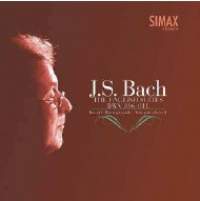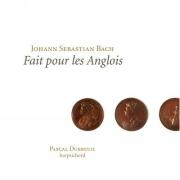Texte paru dans: / Appeared in:
*

GRAMOPHONE (09/2013)
Pour s'abonner /
Subscription information
|
Simax |
|
|
|
Reviewer: Lindsay
Kemp
French and Norwegian recordings of Bach’s English Suites on a
harpsichord
Listening to these two new recordings of Bach’s wonderfully vigorous English
Suites, it is hard to see why they are not quite as popular on disc as the
Partitas. Now though, and with Richard Egarr’s passionately felt but slightly
colourless version having come out earlier this year (Harmonia Mundi, 3/13),
suddenly we can be choosy. Ketil Haugsand and Pascal Dubreuil offer differing
accounts that are both recommendable for their expertise and loving care, so
deciding between them will have to come down to taste.
Dubreuil plays on a sweet-toned Ruckers copy, and his refined finger technique produces a delicate and crisply elegant sound with richly rounded, plum-like trills. The gentleness of his touch shows beautifully in the strummed Sarabande of No 6, there is a rare convincing lilt in the Prélude to No 1 and an exquisitely slight inégale illuminates the Courante of No 5. Elsewhere, though, his tendency towards the less rhythmically flexible can seem relentless, particularly in the profounder preludes, allemandes and sarabandes. Where it works better is in the Galanterien, those lighter dances that can run themselves such as the gavottes and bourrées, as well as in the dynamic gigues, which Dubreuil executes with compulsive flow. By far the hardest thing to live with is the decision to leave in the noise of registrations being changed between movements, especially as the recording raises it to an unrealistic level.
If Dubreuil relies
rather on the inevitability of Bach’s music to do some of the work, Haugsand is
more interventionist. Doubtless some listeners will find his tireless rubato
excessively fussy and mannered, and it is hard not to agree that a movement such
as the Prélude to No 5 loses some of its drive thereby. The heavier sound of his
‘German-style’ instrument and his more leisurely tempi (especially in the
relatively steadfast allemandes) also give his performances a more momentous and
brooding feel than those of the brisk Dubreuil. Yet there is such wisdom and
expressive freedom in his artfully turned corners, subtly varied spread chords
and rhythmic dislocations that you are compelled to listen. The sheer range of
articulation in Bourrée II of No 1 is dazzling, while any one of the sarabandes,
superbly realised in all their sense of majesty, sensitivity and dance, and with
their complex written ornamentation sounding as spontaneous as a wave of the
hand, would be worth your money on their own.
Here is a master harpsichordist
at work.
Fermer la fenêtre/Close window
Cliquez l'un ou l'autre
bouton pour découvrir bien d'autres critiques de CD
Click either button for many other reviews




